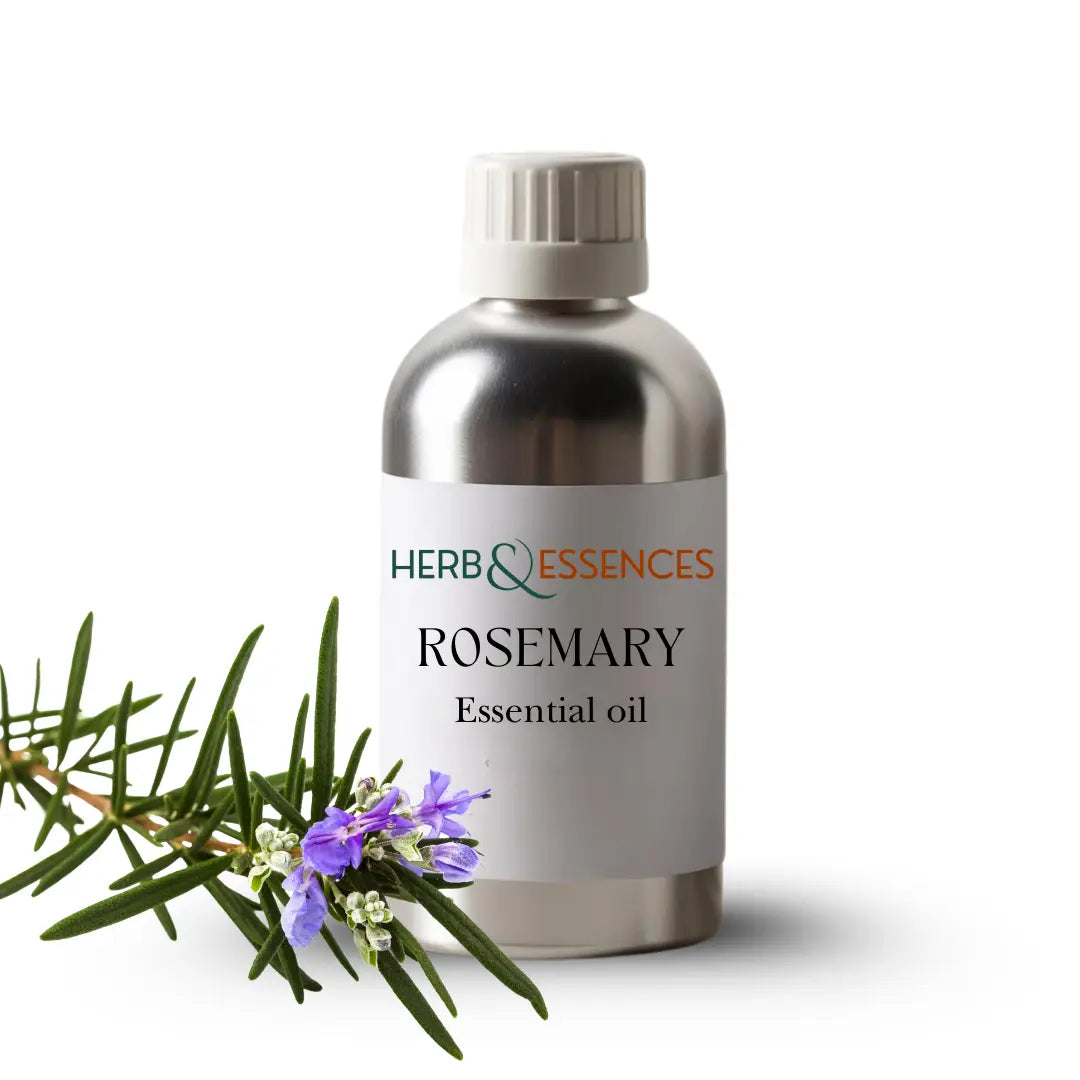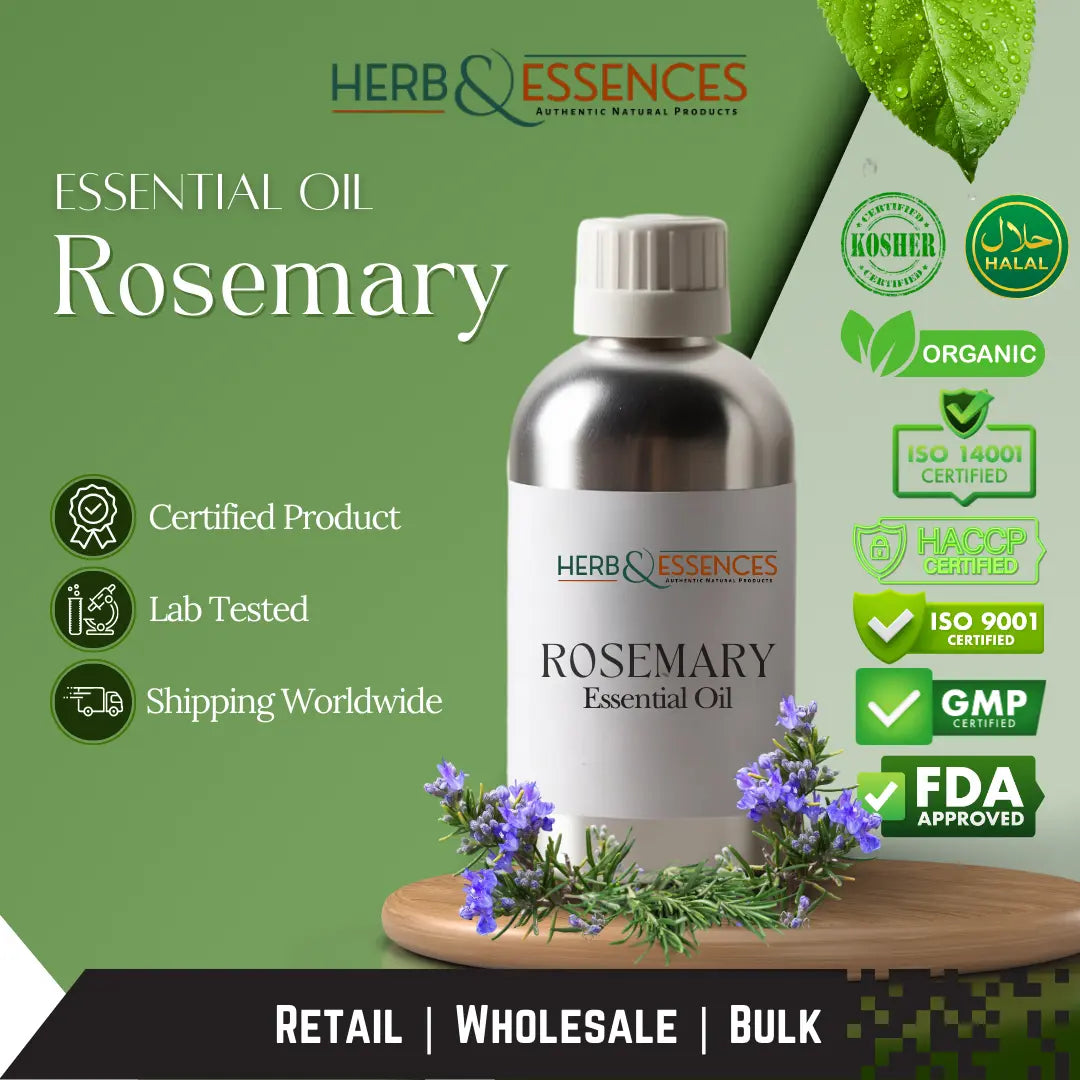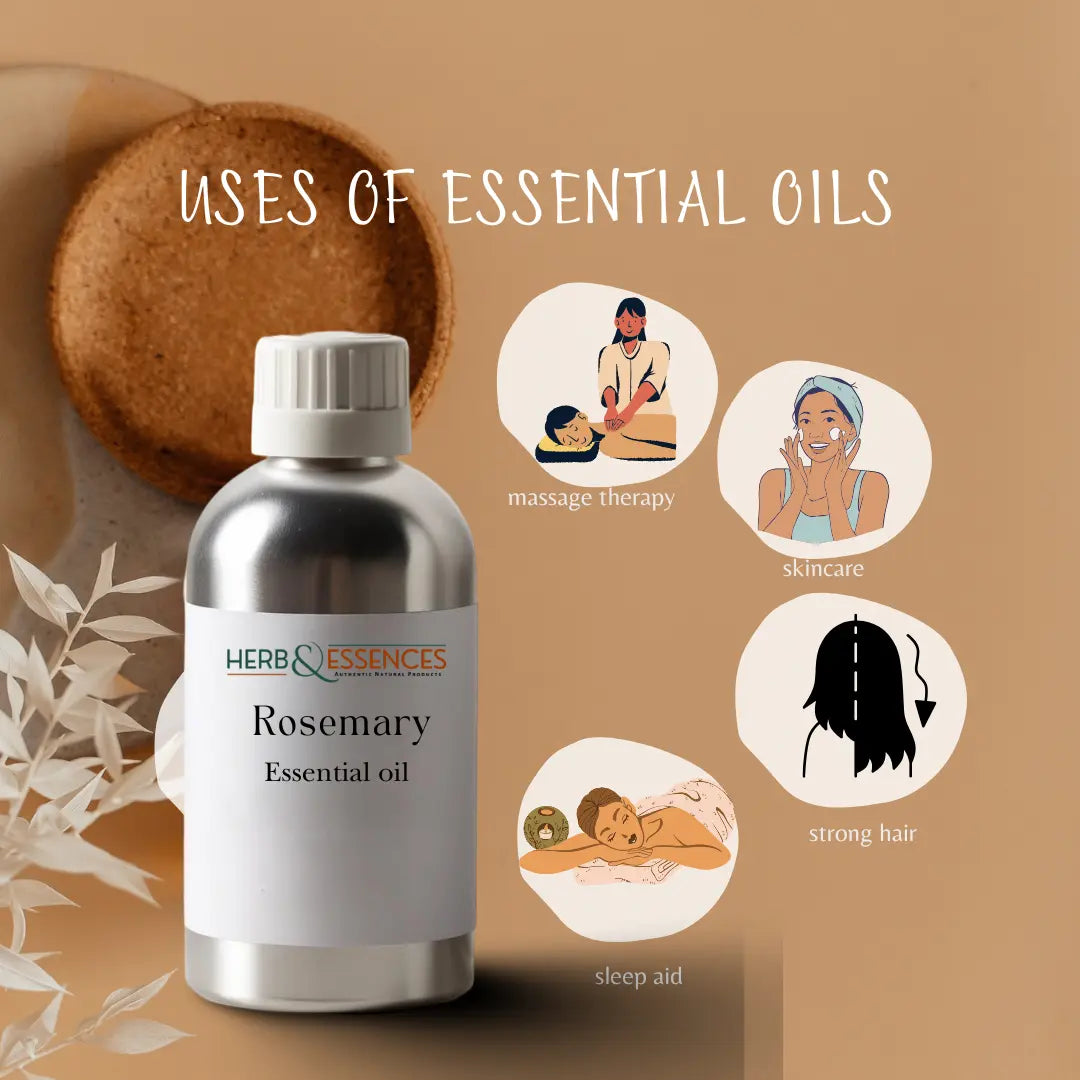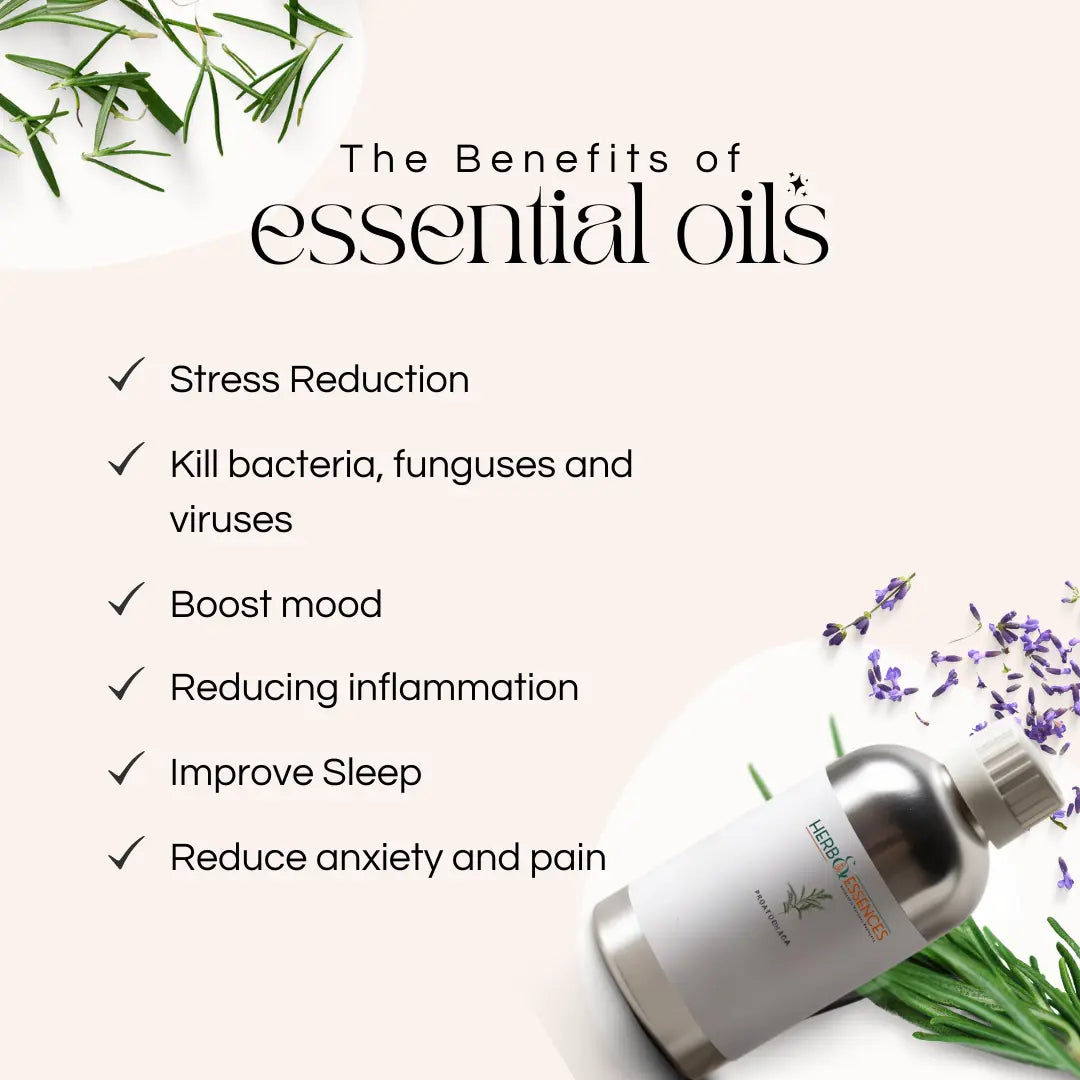Rosemary Essential Oil
Rosemary Essential Oil
Couldn't load pickup availability
Share
Rosemary Essential Oil Description
Botanical Information
Rosemary essential oil is derived from the aromatic leaves of Rosmarinus officinalis, a hardy perennial herb belonging to the Lamiaceae family. Known for its fresh, herbaceous, and woody aroma, Rosemary has been cherished for centuries in traditional medicine, culinary uses, and spiritual practices. It is particularly valued for its invigorating and clarifying properties.
Origin and Source
Native to the Mediterranean region, Rosemary thrives in sunny climates with well-drained soil. Today, it is cultivated globally, with high-quality oil predominantly sourced from countries like Spain, Italy, France, and Morocco. Leaves are harvested sustainably, ensuring the ecological balance and preservation of the plant’s natural habitats.
Extraction Method
Rosemary essential oil is obtained via steam distillation:
• Fresh or dried leaves and flowering tops are distilled to extract the oil, preserving its aromatic and therapeutic compounds. This process results in a pure and potent oil suitable for various applications.
Physical Properties
• Appearance: Clear to pale yellow liquid with a smooth texture.
• Aroma: Fresh, herbaceous, woody, and slightly camphorous with vibrant green notes.
• Viscosity: Light, ideal for blending with carrier oils and other essential oils.
• Solubility: Insoluble in water; soluble in carrier oils and alcohol.
Technical Specification
• Specific Gravity: 0.890–0.920.
• Refractive Index: 1.470–1.480.
• Flashpoint: Approximately 65°C.
Uses and Applications
• Aromatherapy: Boosts mental clarity, improves focus, and relieves stress.
• Skincare: Included in toners and serums for its cleansing and anti-inflammatory properties.
• Hair Care: Used in scalp treatments to nourish hair follicles and stimulate growth.
• Massage Therapy: Blended with carrier oils for invigorating massages that ease muscle tension.
• Natural Remedies: Traditionally used to support respiratory health and improve circulation.
• Perfumery: Acts as a middle note, adding freshness and depth to fragrance blends.
• Home Care: Added to cleaning solutions for its antimicrobial and refreshing aroma.
Benefits and Properties
• Mental Clarity: Enhances focus, memory, and cognitive function.
• Skin-cleansing: Purifies and tones the skin, reducing oiliness and blemishes.
• Hair-nourishing: Promotes healthy scalp and stimulates hair growth.
• Anti-inflammatory: Soothes redness and irritation in skincare formulations.
• Refreshing Atmosphere: Creates an energizing and uplifting environment when diffused.
Safety Information
• Dilution: Always dilute Rosemary essential oil with a carrier oil before applying directly to the skin to avoid irritation.
• Patch Test: Test a small area of skin to check for sensitivities or allergic reactions.
• Avoid Contact: Do not apply near sensitive areas, such as the eyes or open wounds.
• Medical Precautions: Consult a healthcare professional if pregnant, breastfeeding, or undergoing medical treatment, particularly for epilepsy or high blood pressure.
• Keep Away: Store safely out of reach of children and pets.
Storage and Shelf Life
• Storage: Store in a cool, dry place away from sunlight, heat, and moisture. Amber or cobalt blue glass bottles are recommended to preserve its aromatic quality.
• Shelf Life: Typically lasts 2–3 years under optimal storage conditions.
Packaging and Handling
• Packaging: Glass bottles are preferred for smaller quantities, while HDPE containers are suitable for bulk storage.
• Sealing: Ensure containers are tightly sealed to prevent evaporation and contamination.
• Handling: Use clean and sterilized tools during transfer or application to maintain purity.
Sustainability and Ethics
• Eco-conscious Practices: Produced using sustainable harvesting methods to protect Rosemary plants and their ecosystems.
• Cruelty-free: Not tested on animals, adhering to ethical production standards.
• Vegan-friendly: Contains no animal-derived components, making it suitable for environmentally conscious consumers.
• Fair Trade: Often sourced through initiatives supporting local farmers and promoting equitable livelihoods.








